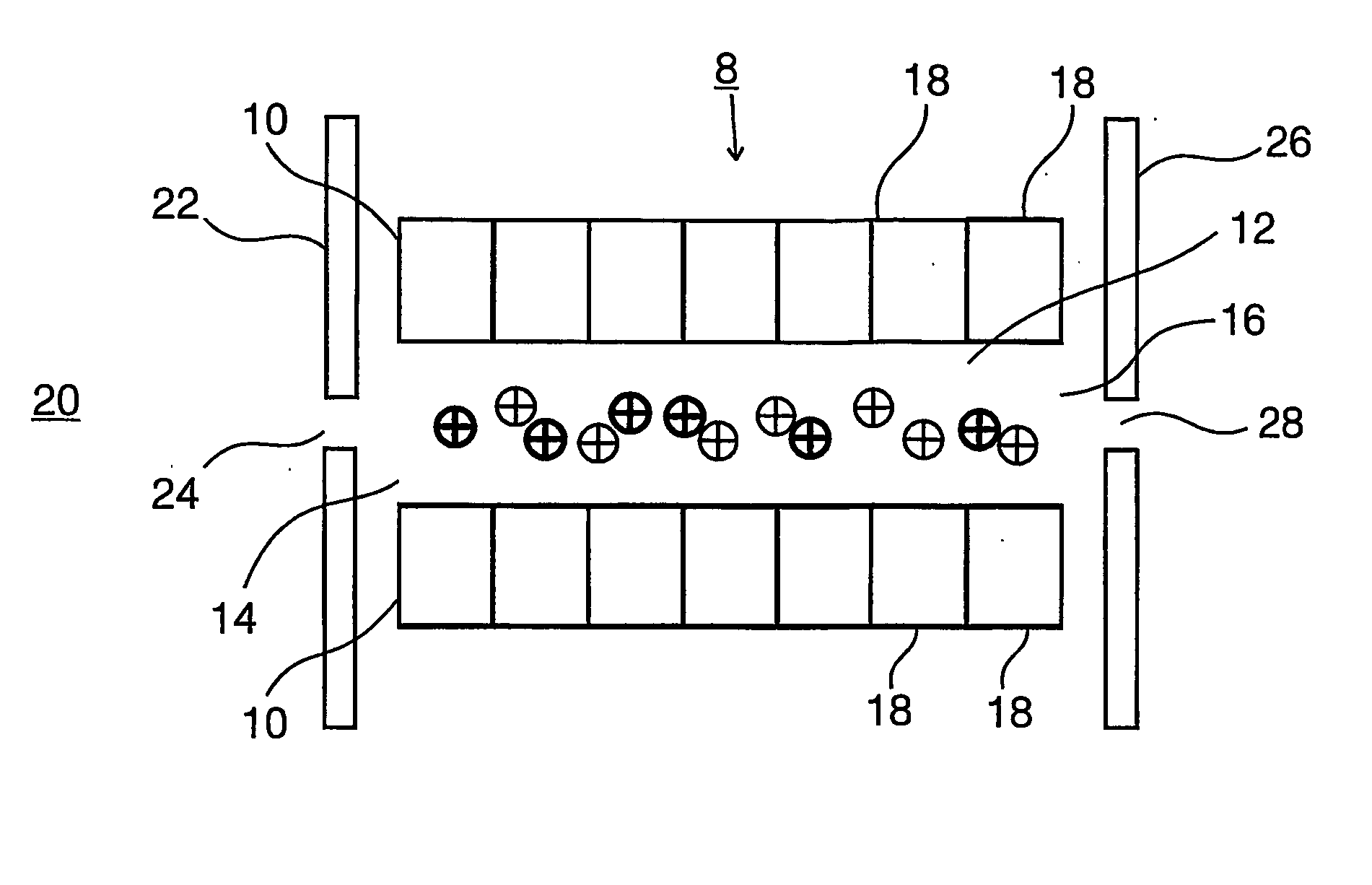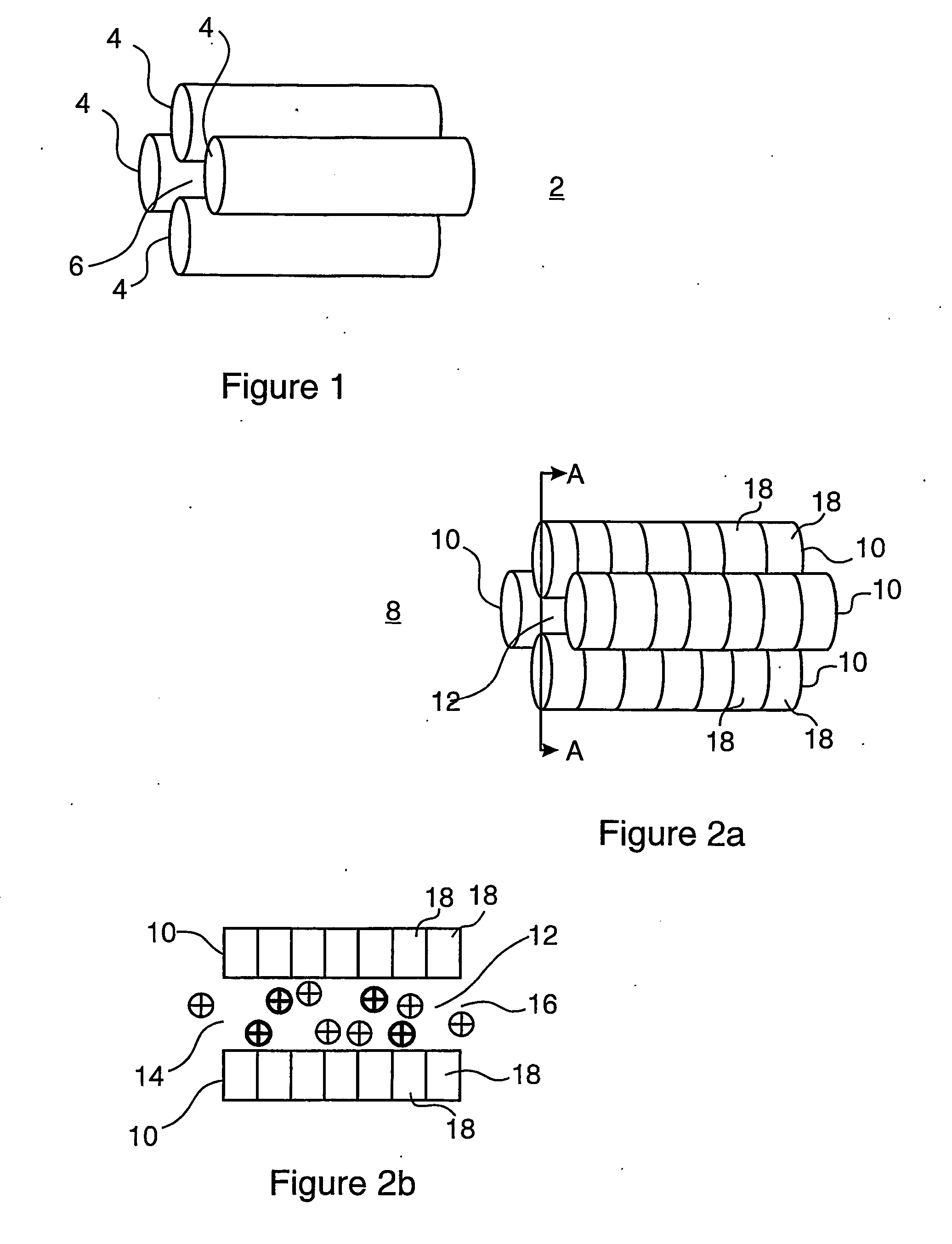Method and quadrupole apparatus for separating ions in the gas-phase
a quadrupole apparatus and gas-phase technology, applied in the field of gas-phase separation methods and apparatuses, can solve the problems of difficult production of asymmetric square waveforms, inability to move, and failure of all efforts to use these and other related rf devices at 760 torr
- Summary
- Abstract
- Description
- Claims
- Application Information
AI Technical Summary
Problems solved by technology
Method used
Image
Examples
experiment # 2
[0086] Experiment #2 is performed on an instrument with segmented quadrupole rods in the collision cell. This experiment is similar to that of Experiment #1, but the segments of the quadrupole are biased to pull the ions through the quadrupole. At the high gas pressures necessary for operation in FAIMS mode, the translational motion of the ions is retarded by the bath gas, and the transmission of ions could be very low. The longitudinal electric field is generated by biasing the segments (superimposed on rf voltages, dc voltages for FAIMS operation, and the asymmetric waveform) with voltages in a series of decreasing potentials (e.g. decreasing for positive ions, increasing for negative ions). This longitudinal field carries the ions along the length of the assembly, and they are transmitted out of the collision cell into the final analyzer (quadrupole, TOF, FTMS etc. etc.).
[0087] Experiment #3 can be performed on any of the instruments used for experiments #1 and #2. This experimen...
PUM
 Login to View More
Login to View More Abstract
Description
Claims
Application Information
 Login to View More
Login to View More - R&D
- Intellectual Property
- Life Sciences
- Materials
- Tech Scout
- Unparalleled Data Quality
- Higher Quality Content
- 60% Fewer Hallucinations
Browse by: Latest US Patents, China's latest patents, Technical Efficacy Thesaurus, Application Domain, Technology Topic, Popular Technical Reports.
© 2025 PatSnap. All rights reserved.Legal|Privacy policy|Modern Slavery Act Transparency Statement|Sitemap|About US| Contact US: help@patsnap.com



